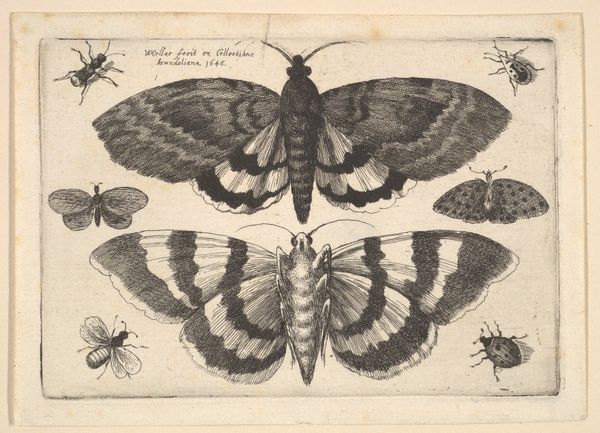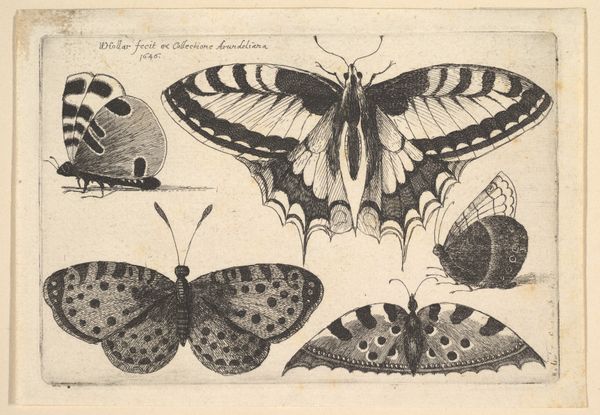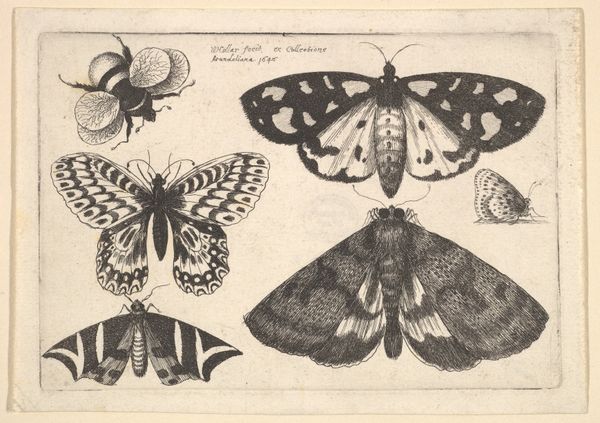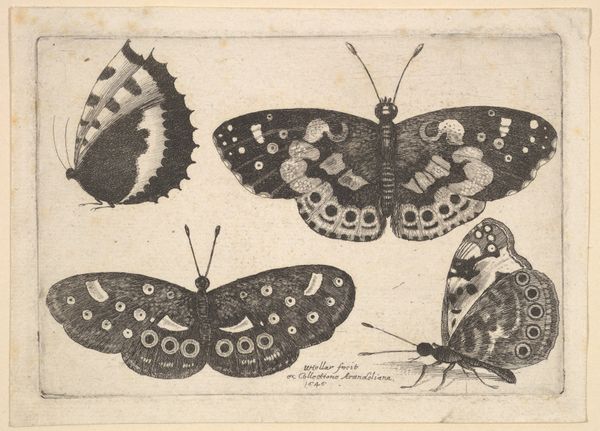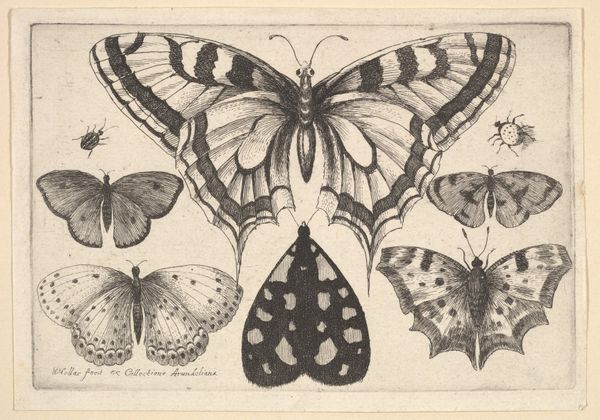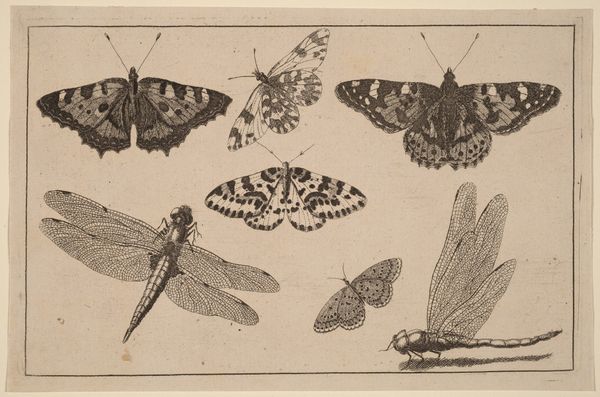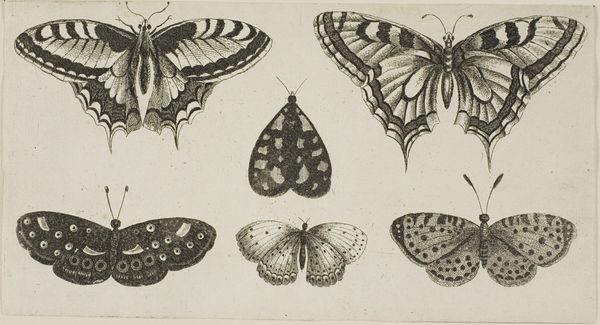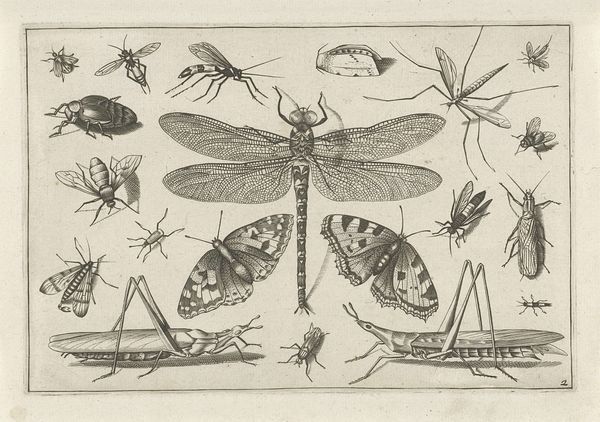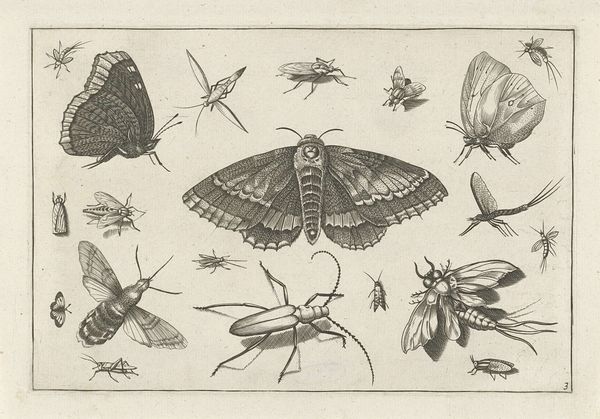
drawing, print, etching, engraving
#
drawing
#
baroque
# print
#
etching
#
figuration
#
line
#
northern-renaissance
#
engraving
Dimensions: Plate: 3 3/16 × 4 5/8 in. (8.1 × 11.8 cm) Sheet: 3 9/16 × 4 13/16 in. (9 × 12.3 cm)
Copyright: Public Domain
Wenceslaus Hollar created this etching, "Three Butterflies and a Wasp," using a copper plate and etching tools. Etching involves coating a metal plate with a waxy, acid-resistant substance called a ground, and then scratching an image into the ground with a needle. The plate is then immersed in acid, which bites into the exposed metal, creating lines. The making of this print depended on skilled labor. The technique was part of a complex system of production, from the extraction of the metal, to the craftsmen who made the tools, to Hollar himself, a highly trained professional. The print exemplifies Hollar’s skill in capturing the delicate details of the insects, their forms rendered with careful precision. The resulting images, like this one, could be printed multiple times, allowing for widespread distribution. So, while Hollar was undeniably an artist, he was also part of a commercial enterprise. By appreciating the methods of production, we can move beyond distinctions between art and craft, and appreciate the interconnectedness of creativity, labor, and commerce in Hollar's time.
Comments
No comments
Be the first to comment and join the conversation on the ultimate creative platform.
